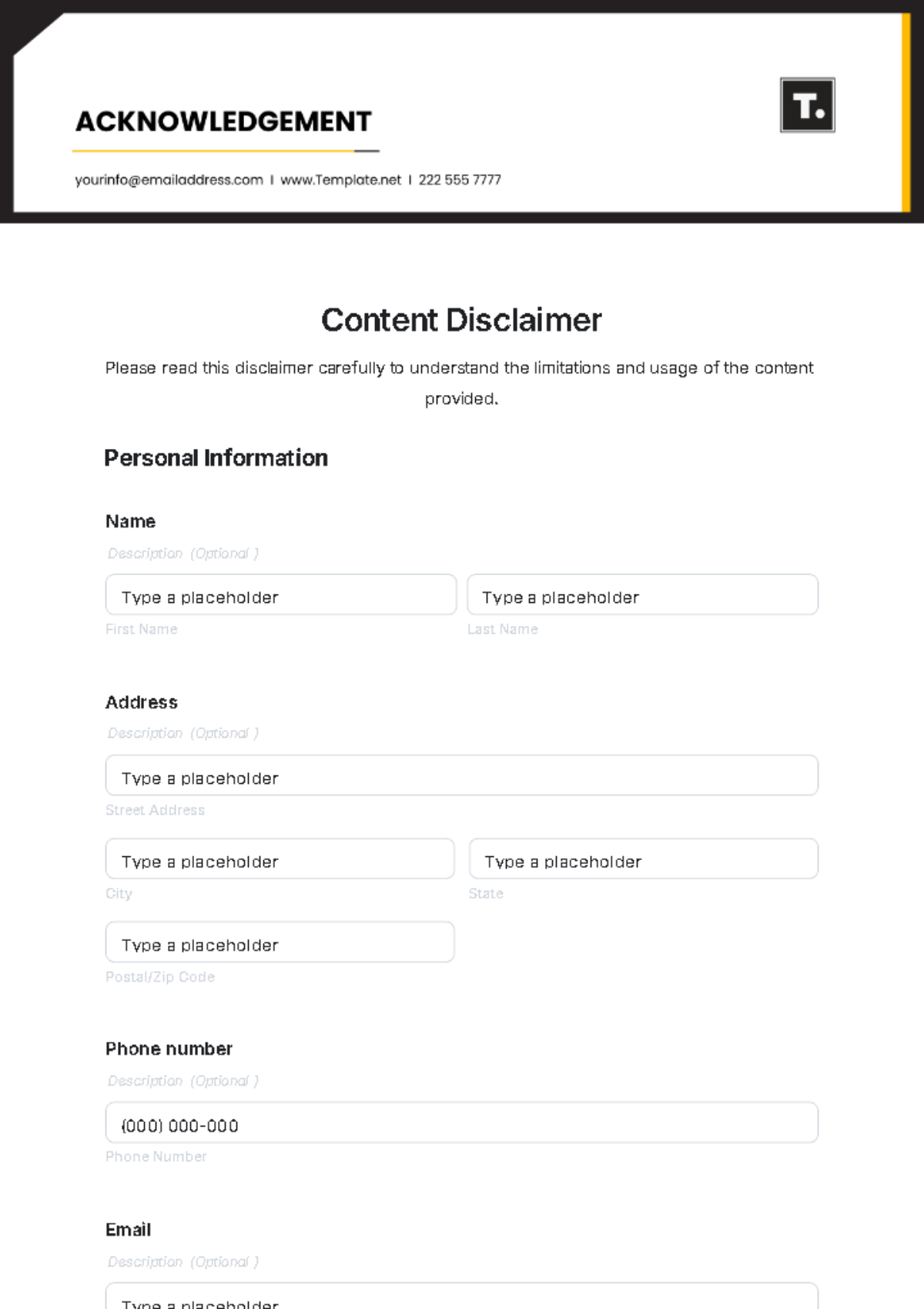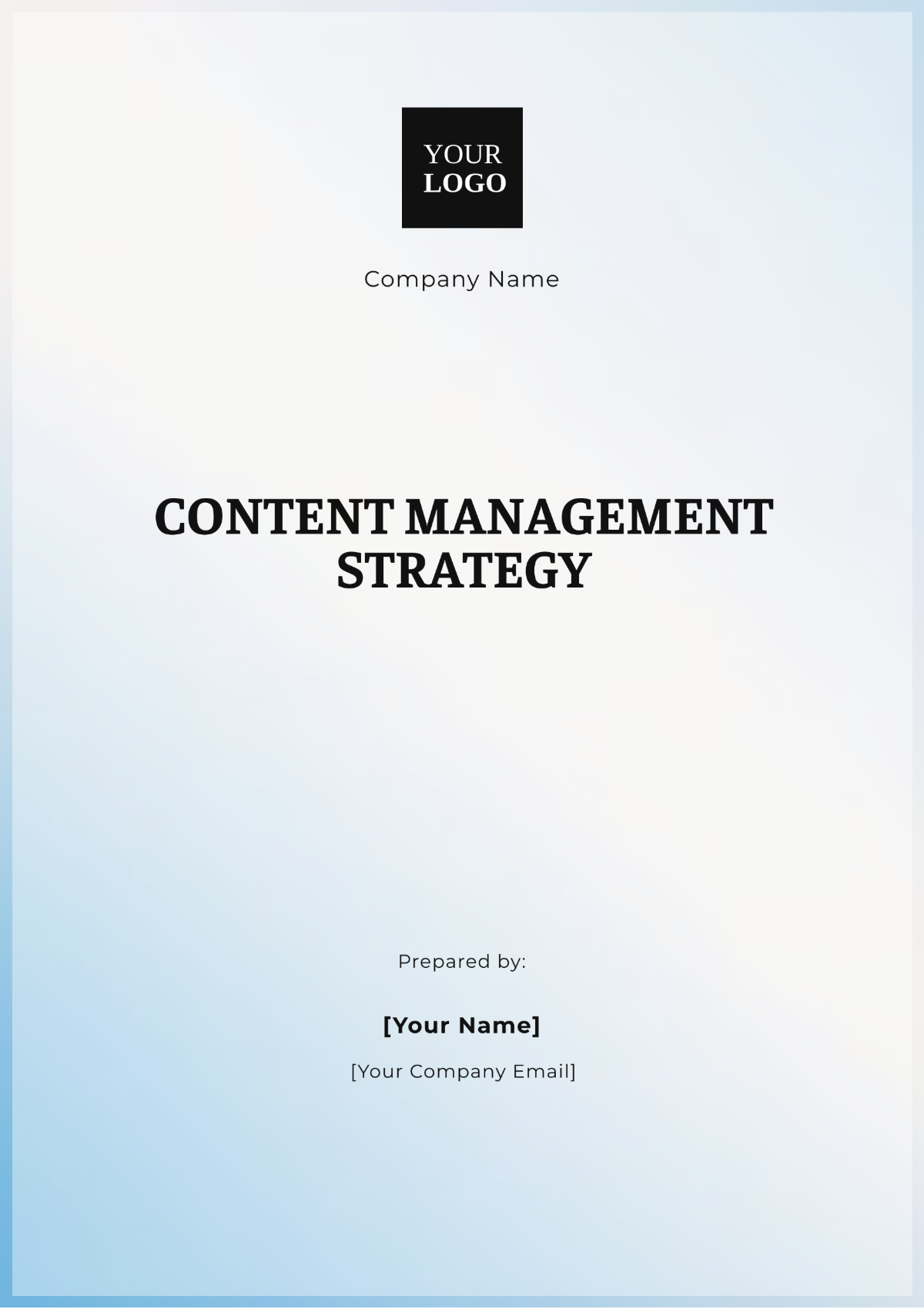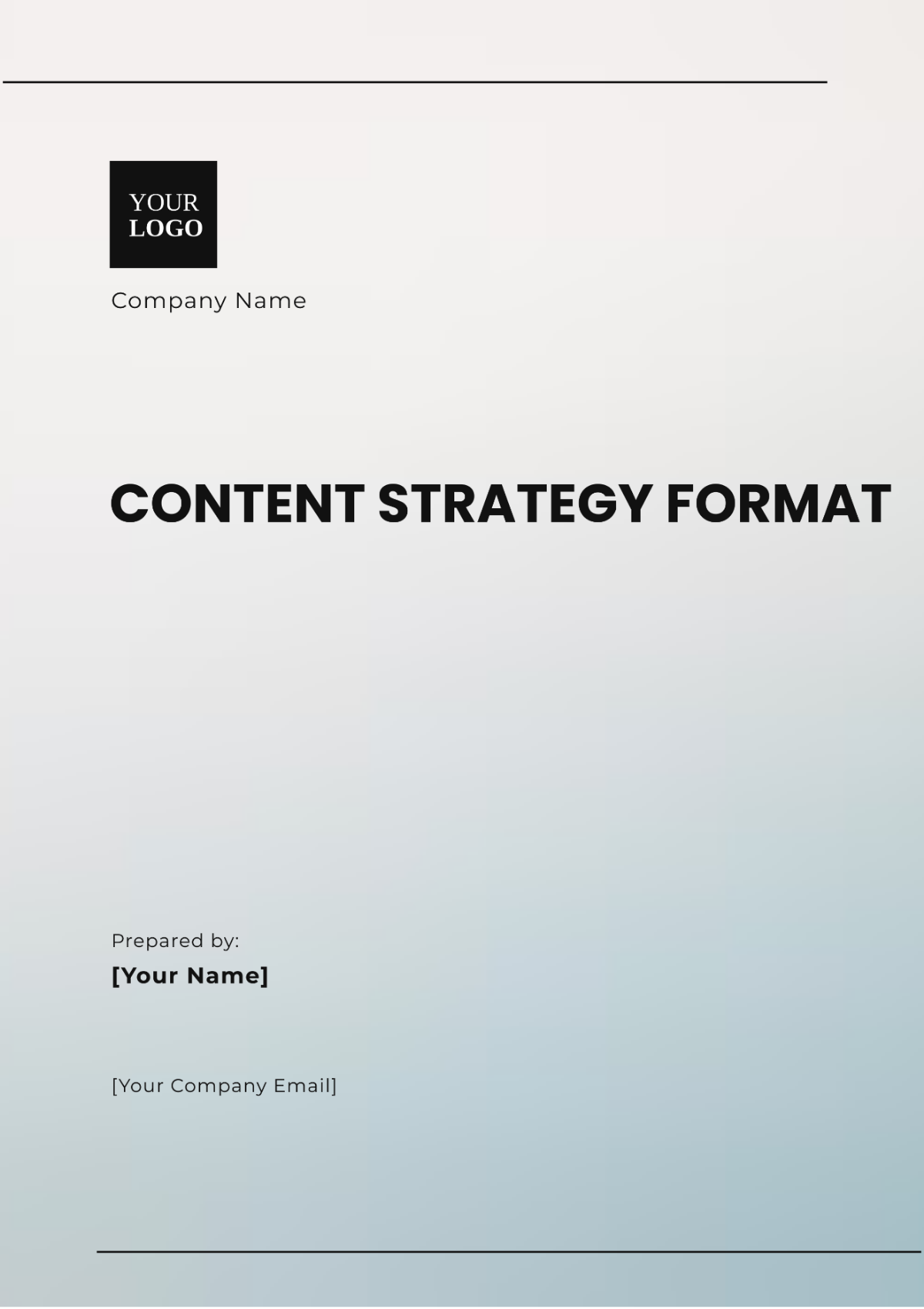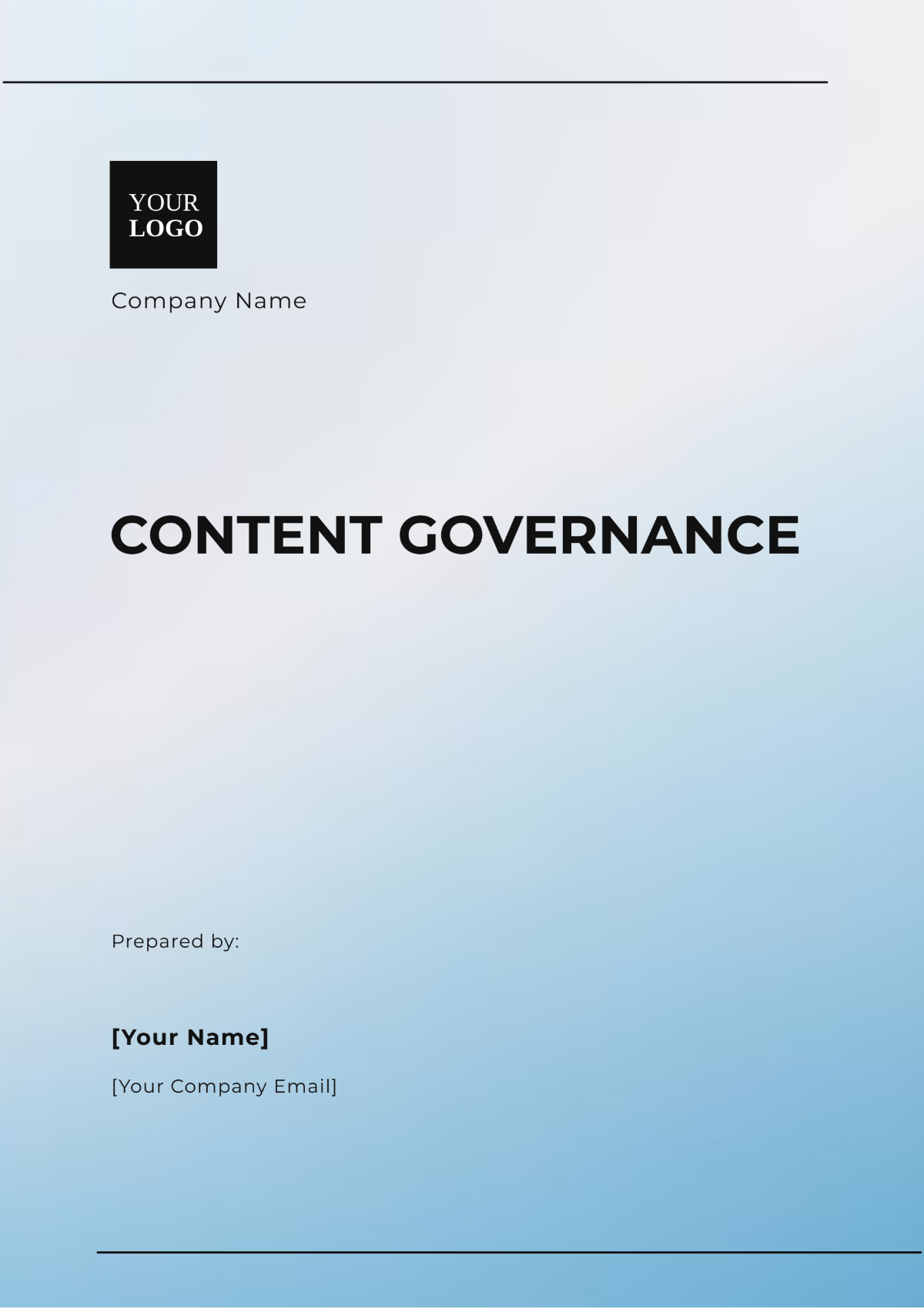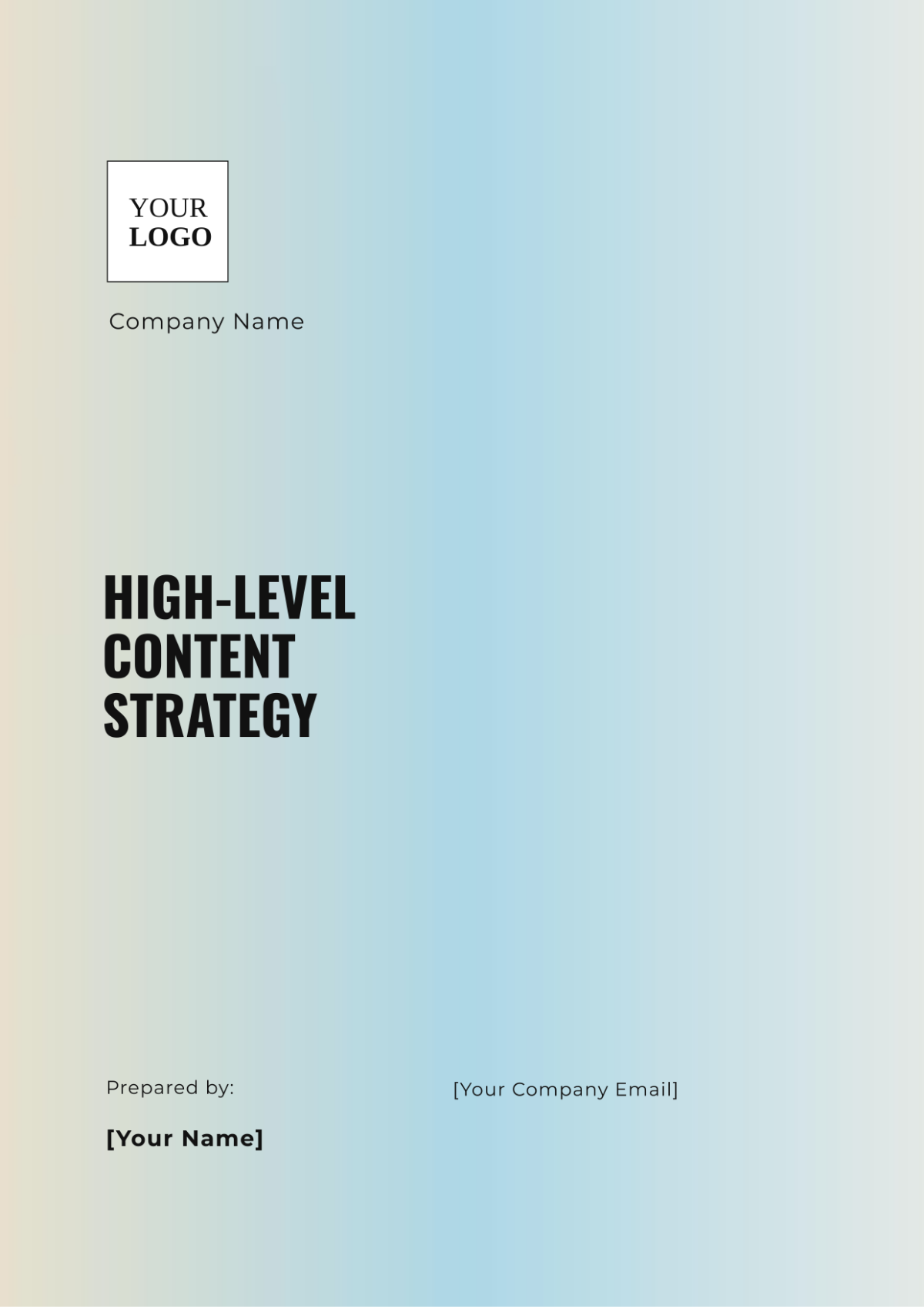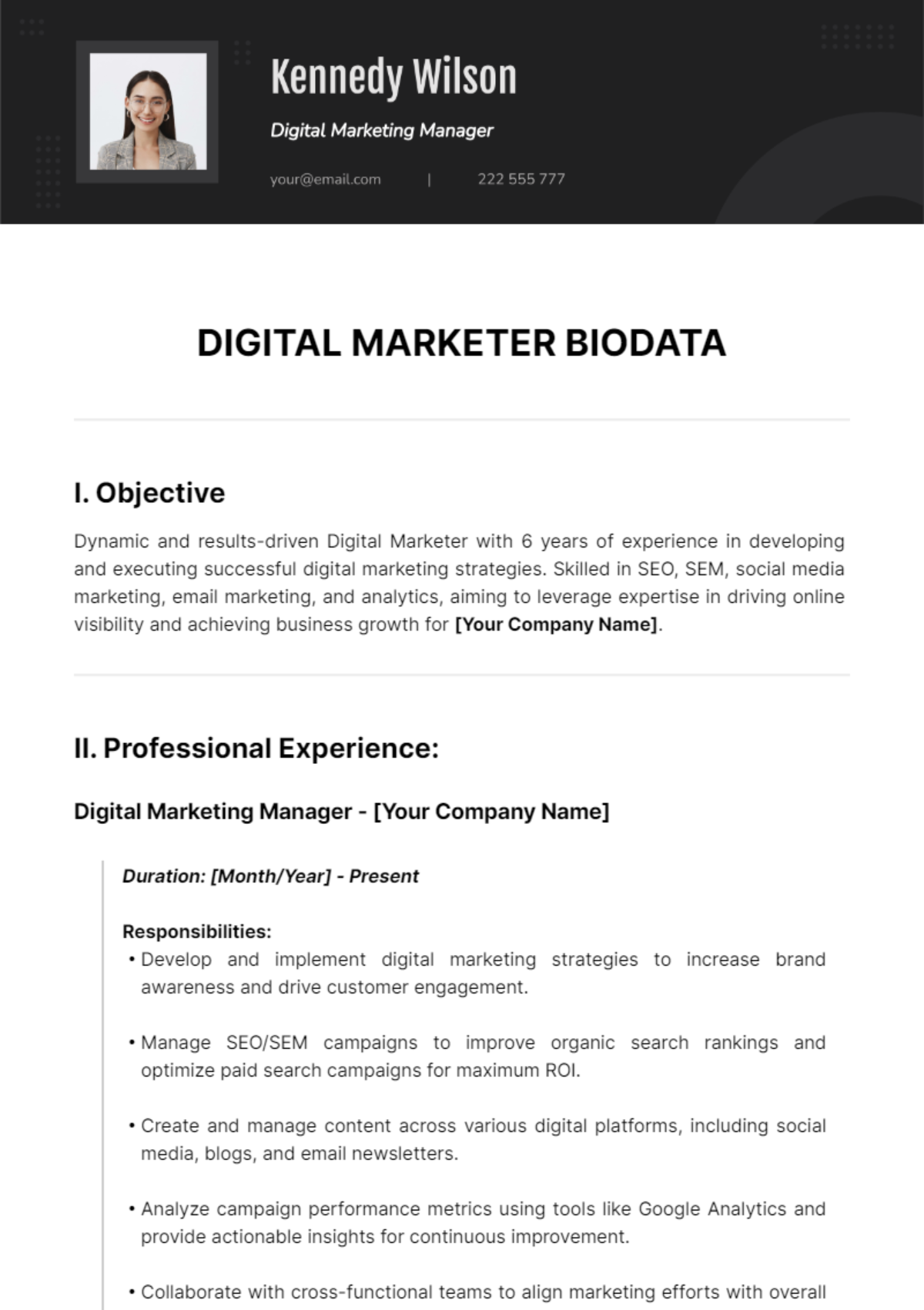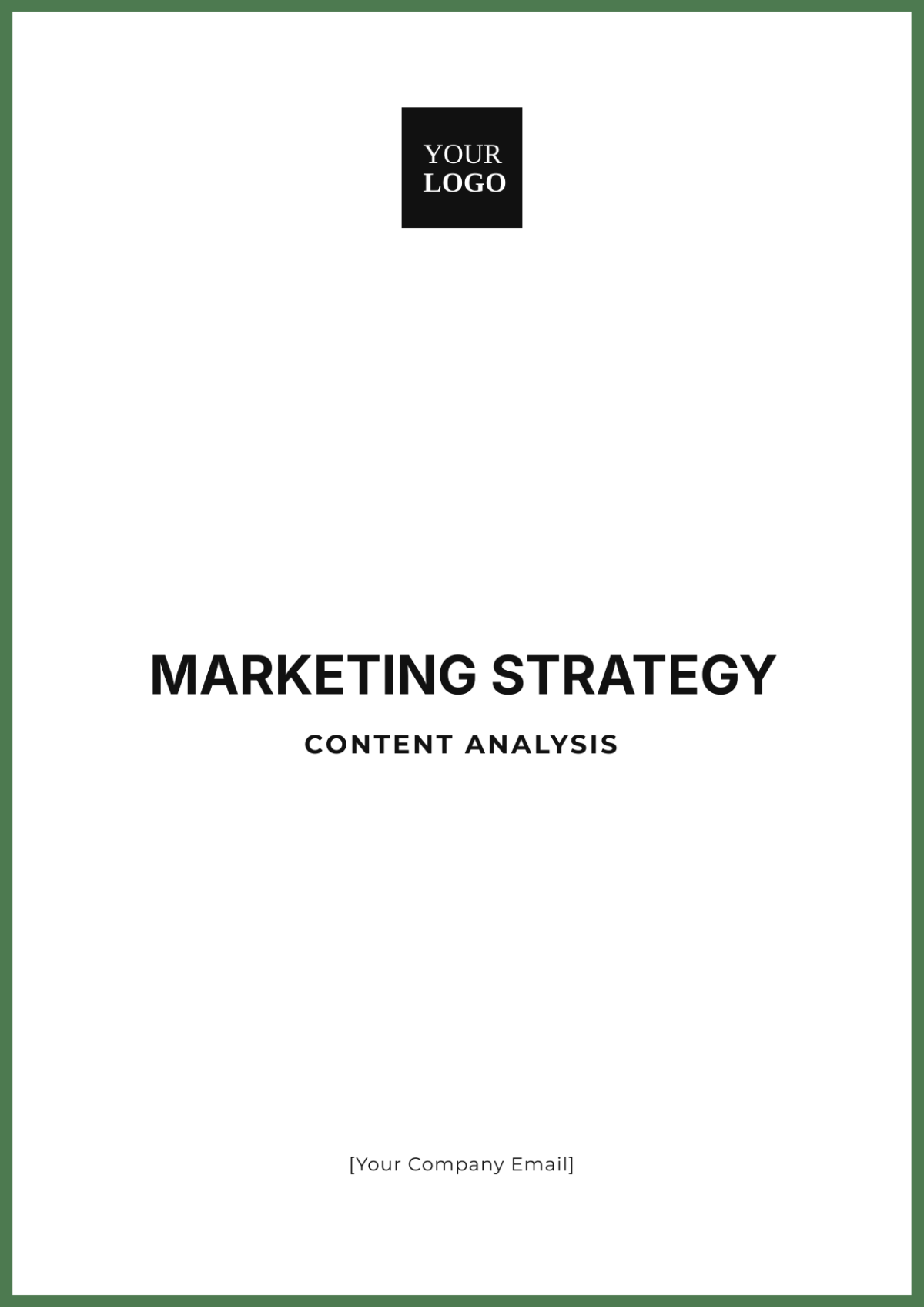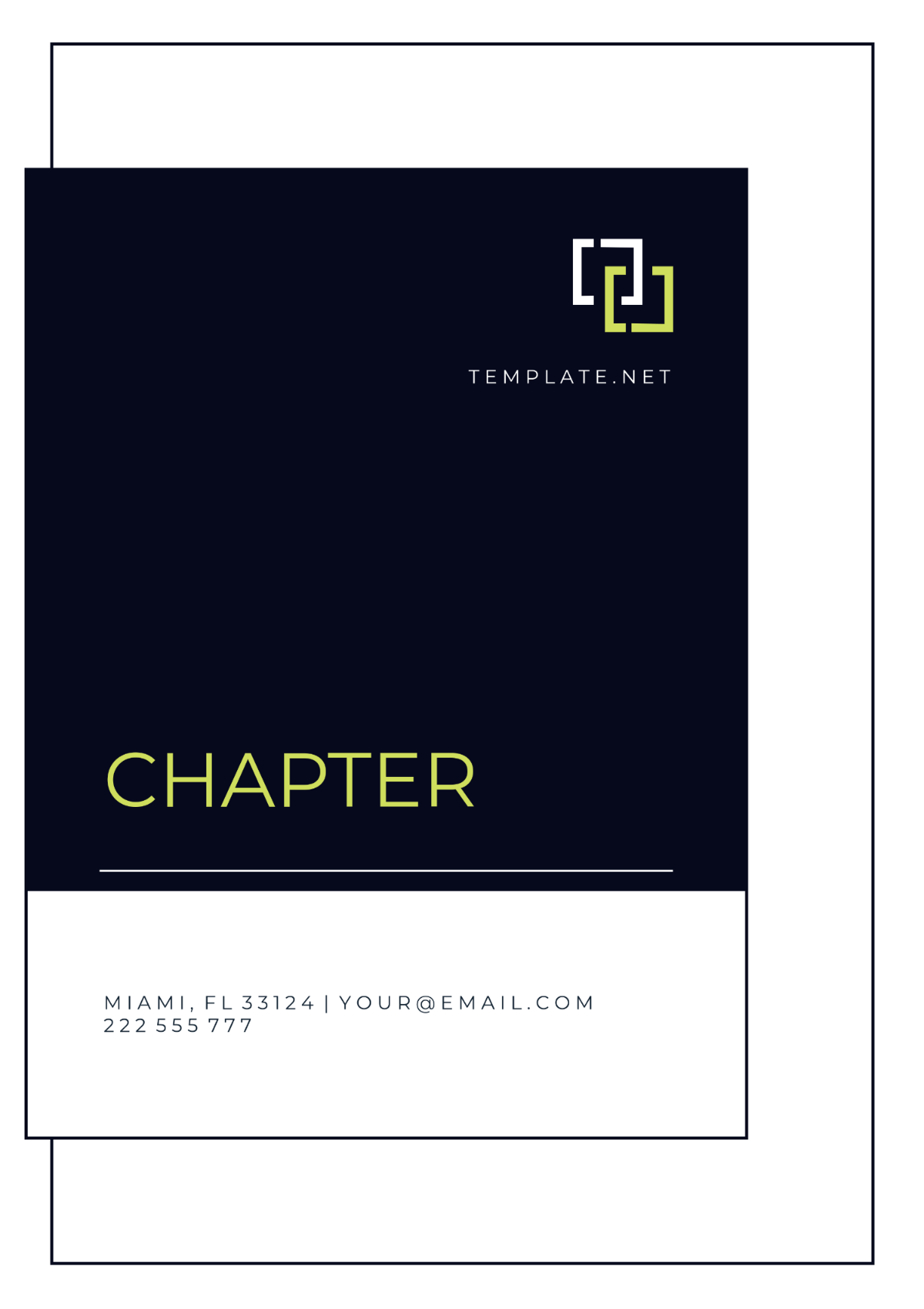Editorial Service Content Strategy
I. Introduction
A. Overview
In [2050], content remains the cornerstone of digital marketing and communication. Brands that craft high-quality, engaging, and well-targeted editorial content build trust and authority within their industries. The goal of this strategy is to elevate your company’s content approach to ensure long-term success, helping to boost brand awareness, engagement, and conversions. As digital content consumption is projected to grow by [25%] annually through [2050], a structured content plan is no longer optional but essential to staying ahead of the competition. By producing valuable content and ensuring it reaches the right audience at the right time, [Your Company Name] aims to support your business in generating consistent, long-term results.
B. Importance of Editorial Content Strategy
Editorial content plays a central role in establishing your business as an authority in your field. A solid editorial strategy not only increases visibility but also builds relationships with potential customers. Companies that invest in strategic content creation experience:
[70%] higher engagement rates across social media platforms,
A [40%] increase in lead generation due to educational and helpful content,
[30%] stronger brand loyalty from audiences who identify with the values portrayed through the content.
For instance, businesses that deploy a well-researched blog strategy combined with a targeted social media presence increase their website traffic by [60%], which leads directly to higher conversion rates. [Your Company Name] will ensure that every piece of content serves your business's overarching goals, offering measurable value and supporting your position in the marketplace.
II. Goals and Objectives
A. Primary Goals
The overarching goals of this editorial strategy are focused on aligning content with your business priorities, reaching targeted audiences, and driving measurable outcomes. The following goals will guide the creation and distribution of content:
Increase Brand Awareness:
By producing content that resonates with your audience, we aim to achieve consistent recognition across multiple channels. This includes creating content that addresses key industry challenges, highlights your company’s expertise, and features case studies and success stories.Drive Engagement:
Engagement is a primary indicator of content effectiveness. With this goal in mind, we will develop content that encourages interaction. This includes comments, shares, clicks, and downloads, ensuring that users stay connected with your brand.Improve Conversions:
The ultimate goal of content is to drive action. Whether it’s signing up for a newsletter, purchasing a product, or downloading a whitepaper, we will design content that guides potential customers through every stage of their journey, from awareness to decision-making.
B. Measurable Objectives
The following objectives will help measure the success of the editorial strategy, ensuring that the content achieves the desired outcomes:
Metric | Target Goal by [Year 2052] |
|---|---|
Monthly Website Visitors | 500,000 |
Social Media Engagement | 25% Growth in Interactions |
Content Downloads (eBooks, Whitepapers) | 50,000/year |
Conversion Rate Increase | 10% Improvement |
By using these goals, we can assess the efficiency and impact of the strategy, making necessary adjustments to improve outcomes. Achieving these targets will solidify [Your Company Name]’s digital presence and position in the marketplace.
III. Audience Segmentation
A. Target Audience Identification
Understanding your audience is the first step to crafting a content strategy that truly resonates. At [Your Company Name], we focus on identifying two key audience segments:
Primary Audience:
This group consists of decision-makers within organizations, such as Chief Executive Officers (CEOs), Chief Marketing Officers (CMOs), and department directors. They are the ones who will drive the purchasing decisions and are most interested in how your products or services solve their organizational challenges. Industries such as technology, finance, healthcare, and education are prime targets for this content.Secondary Audience:
The secondary audience consists of middle-tier professionals and enthusiasts looking for educational content that can help them advance in their careers or learn about industry trends. They may not be decision-makers but often influence decisions within their teams. This group is highly engaged with long-form articles, infographics, and video content that offers insights into industry practices, case studies, and how-to guides.
B. Developing Audience Personas
Creating detailed audience personas allows for more focused content creation. These personas serve as models for the type of content that will be most relevant and engaging. Below is an example of two detailed personas for [Your Company Name]:
Persona Name | Demographics | Pain Points | Preferred Content Format |
|---|---|---|---|
Tech Visionary | Age 35-50, Urban, Income > $100,000 | Lack of market insights and innovation | In-depth reports, long-form blogs, webinars |
Young Professional | Age 25-35, Entry-Level, Income $50,000-80,000 | Seeking career advancement, skills development | Infographics, videos, podcasts |
These personas allow [Your Company Name] to personalize content, ensuring it speaks directly to the needs and interests of each group. Developing these personas also helps identify the most effective content formats and platforms for distribution.
IV. Content Pillars and Themes
A. Core Content Pillars
Content pillars are overarching topics that your content strategy will revolve around. These pillars should align with your business goals and audience interests:
Thought Leadership:
This pillar involves publishing expert-driven content that showcases the depth of your knowledge and insights into industry trends. Thought leadership content positions your brand as a leader in your field and builds trust with both your primary and secondary audiences.Education and Resources:
This pillar focuses on providing valuable educational content that helps your audience solve problems or advance their careers. It includes how-to guides, best practices, eBooks, and tutorials that address common pain points in the industry.Engagement Stories:
Content under this pillar will consist of case studies, testimonials, customer stories, and success narratives. These pieces show how your products or services have successfully helped others, making them more relatable and persuasive for your audience.
B. Themes and Topics
Each month, [Your Company Name] will explore a theme that ties back to the content pillars and addresses trending topics within the industry. These themes will guide content production and ensure a focused approach to audience engagement. Example themes and topics include:
Month | Theme | Key Topics |
|---|---|---|
January | Industry Innovation | Emerging technologies, AI, machine learning, automation in the tech industry |
March | Sustainability | Green practices, corporate social responsibility, sustainability in business |
July | Leadership Excellence | Personal growth, building high-performing teams, leadership strategies for the tech industry |
October | Cybersecurity | Data protection, securing digital infrastructures, compliance with industry regulations |
By structuring content creation around themes, [Your Company Name] ensures that each piece of content is both timely and relevant, allowing the brand to stay at the forefront of industry discussions.
V. Content Formats and Channels
A. Content Formats
To ensure the content engages a wide range of audience preferences, a mix of content formats will be used:
Long-Form Articles:
Articles that are [1,200] to [2,000] words in length provide in-depth insights into key topics, offering a comprehensive view of industry trends, strategies, and best practices.Visual Content:
Infographics, images, and videos simplify complex information and are highly shareable on social media. These formats resonate particularly well with younger audiences and those on mobile devices.Interactive Content:
Quizzes, polls, and surveys engage users directly, encouraging them to participate and providing valuable insights into their preferences and behaviors.
B. Distribution Channels
To maximize the reach of the editorial content, [Your Company Name] will distribute content across various channels. A multi-channel approach ensures that the content reaches its intended audience, no matter where they spend their time online.
Platform | Content Type | Frequency |
|---|---|---|
Company Website | Blogs, case studies | Weekly |
Social Media | Short posts, stories, ads | Daily |
Email Newsletter | Updates, exclusive content | Monthly |
Third-Party Sites | Guest Posts, Partner Blogs | Bi-Monthly |
The strategy will focus on optimizing these channels to ensure the content performs well on each, whether through SEO optimization on the website or engagement tactics on social media platforms.
VI. Workflow and Process
A. Editorial Workflow
An efficient editorial workflow is vital to maintaining the quality and consistency of your content. [Your Company Name] will implement a streamlined process:
Planning:
Content planning involves creating detailed editorial calendars, outlining content topics, deadlines, and distribution plans.Creation:
Our content creators, including writers, graphic designers, and video producers, will work collaboratively to produce content that aligns with your vision and goals.Approval:
Before publication, content will undergo multiple rounds of review and approval. This ensures accuracy, coherence, and alignment with brand guidelines.
Stage | Responsible Team | Timeline |
|---|---|---|
Content Draft | Content Writers | 5 days per piece |
Editing | Senior Editor | 2 days |
Publishing | Marketing Team | 1 day |
This workflow ensures content is delivered on time, meets the required standards, and aligns with overall strategic objectives.
VII. SEO and Analytics
A. SEO Strategies
Search engine optimization (SEO) is critical in ensuring that your content reaches its intended audience. [Your Company Name] aims to enhance content visibility on search engine result pages (SERPs) through a multifaceted SEO strategy. Our approach focuses on optimizing both the technical and creative aspects of content to improve rankings, increase organic traffic, and boost visibility across multiple platforms.
Keyword Optimization:
Effective keyword research and optimization are foundational to SEO. [Your Company Name] uses advanced tools such as Google Keyword Planner, SEMrush, and Ahrefs to conduct thorough keyword research. This allows us to identify high-value, low-competition keywords relevant to our business and target audience. Keywords are selected based on their search volume, relevance to our brand, and search intent, ensuring the content addresses user queries effectively.Long-tail Keywords: Long-tail keywords, which are longer and more specific search phrases, tend to have less competition and higher conversion rates. [Your Company Name] focuses on optimizing content for these long-tail keywords to capture highly targeted search traffic.
Primary vs. Secondary Keywords: Primary keywords represent the main topic of the content, while secondary keywords support the content’s overall theme. Both types are strategically incorporated into the headings, meta descriptions, image alt texts, and throughout the body content to ensure the content is comprehensive and aligns with user intent.
Content Optimization for Featured Snippets:
Featured snippets—direct answers that appear at the top of search results—have become a valuable resource for driving organic traffic. By structuring content to directly answer common questions and using bullet points, numbered lists, and concise answers, [Your Company Name] positions content to be included in these valuable snippets.On-Page SEO:
On-page SEO encompasses the technical aspects of optimizing individual pieces of content to ensure they rank well in search engines. This includes:Meta Descriptions and Title Tags: Writing compelling meta descriptions and title tags that include the target keywords encourages users to click on your content. These elements should also match the intent behind the search queries.
Internal Linking: Linking to other relevant content on your website not only helps to keep users engaged but also spreads link equity across your site. This is beneficial for improving the SEO performance of all pages on your website.
Mobile Optimization: With mobile traffic now accounting for more than [50%] of all global web traffic, ensuring content is mobile-friendly is paramount. [Your Company Name] follows a mobile-first approach to design and optimize all content, ensuring seamless experiences across devices.
Content Audits:
Content audits are essential for ensuring that existing content remains relevant and performs well. [Your Company Name] will perform quarterly content audits to evaluate the performance of older articles, blog posts, and other pieces of content. The audit process includes identifying outdated content, broken links, and opportunities for keyword optimization. Content may be refreshed by adding new information, optimizing for different keywords, or removing outdated references.Example: If an article initially optimized for a specific keyword no longer ranks well due to changes in search algorithms, it may be updated with fresh information, statistics, and optimized for newer or trending keywords.
Backlink Strategy:
Building high-quality backlinks is one of the most important factors in improving search engine rankings. Backlinks from authoritative websites signal to search engines that your content is credible and valuable. [Your Company Name] will employ a proactive strategy to acquire high-quality backlinks through the following methods:Guest Posts: Writing guest blog posts for high-traffic websites in your industry is a great way to earn valuable backlinks. These posts should align with the target site’s audience and link back to relevant content on your own site.
Influencer Collaborations: Working with industry influencers who can share your content with their audiences increases the likelihood of earning backlinks and driving traffic to your website.
Content Syndication: Syndicating content through reputable platforms such as Medium, LinkedIn Pulse, and industry-specific websites helps amplify content reach and secure backlinks.
SEO Strategy | Target Result by [Year 2052] |
|---|---|
Organic Traffic | 500,000 monthly visitors |
Bounce Rate | Below 30% |
Click-Through Rate (CTR) | Above 8% |
Top 3 Ranking Keywords | 50+ primary keywords |
B. Analytics Tools
Effective SEO and performance measurement require advanced analytics tools to track content success and identify areas for improvement. [Your Company Name] utilizes the following analytics platforms to track performance, measure results, and optimize strategies.
Google Analytics:
Google Analytics is essential for tracking a variety of key performance indicators (KPIs) such as website traffic, page views, average session duration, and conversion rates. It allows the editorial team to see how users interact with content and which pages are most successful at driving conversions. Key data points tracked include:Traffic Sources: Understanding where your traffic is coming from—whether organic search, social media, or direct visits—enables you to adjust marketing efforts accordingly.
User Behavior: Metrics such as bounce rate, time on page, and click-through rates help determine how well content is engaging users and whether it encourages them to take further actions.
SEMrush:
SEMrush provides advanced keyword tracking, competitor analysis, and backlink monitoring. By tracking keyword rankings and identifying opportunities for improvement, [Your Company Name] ensures that content is optimized and stays competitive within its industry.Keyword Position Tracking: It tracks the rankings of target keywords over time, highlighting opportunities for content optimization and potential threats from competitors.
Competitor Insights: SEMrush helps to analyze competitor content strategies, identify high-ranking content, and discover gaps that can be filled with original content.
Hootsuite:
For social media performance, [Your Company Name] uses Hootsuite to manage and track social media content across multiple platforms. By analyzing engagement data—likes, shares, comments, and click-through rates—the company can adjust social media strategies to maximize reach and interaction.Audience Insights: Hootsuite provides detailed audience demographics, allowing for better content targeting and audience segmentation.
Performance Reports: Social media performance reports allow for a real-time view of how well content is performing on each platform, enabling quick adjustments to strategy.
Through regular use of these analytics tools, [Your Company Name] will continuously monitor and optimize content performance to ensure maximum ROI on content creation efforts.
VIII. Budget and Resource Allocation
A. Budget Estimation
Effective implementation of the editorial strategy requires careful financial planning. For [Your Company Name], the budget will encompass content creation, marketing tools, distribution efforts, and analysis. The estimated breakdown for the next [2-3] years is as follows:
Category | Estimated Annual Cost ($) |
|---|---|
Content Creation | 200,000 |
Marketing & Distribution | 150,000 |
SEO & Analytics | 70,000 |
Social Media & Influencers | 80,000 |
Content Tools & Software | 40,000 |
Total | 540,000 |
Content Creation: [37% of budget]
This portion will be dedicated to hiring content writers, video producers, designers, and other team members involved in content development. High-quality, engaging content is essential for the strategy’s success, and a significant investment will ensure top-tier resources are used to create it.Marketing & Distribution: [28% of budget]
Funds allocated to marketing and distribution will go towards paid media campaigns, social media advertising, email marketing platforms, and influencer partnerships. These efforts help amplify content reach and generate leads and conversions.SEO & Analytics: [13% of budget]
A portion of the budget will go toward SEO optimization, keyword research tools, and analytics platforms. These tools are essential for measuring content success, identifying optimization opportunities, and ensuring content ranks well in search results.Social Media & Influencers: [15% of budget]
Social media campaigns and influencer partnerships will be key to growing brand awareness and engagement. This includes paid promotions, sponsored posts, and influencer collaboration fees.Content Tools & Software: [7% of budget]
Subscription costs for content management systems (CMS), project management tools, content scheduling platforms, and SEO software will be accounted for here.
This budget will allow [Your Company Name] to produce high-quality content while ensuring that the necessary tools and resources are available to optimize performance and reach the intended audience.
B. Resource Allocation
The allocation of resources within the editorial team is also a crucial factor in the success of the content strategy. The following breakdown will ensure that resources are effectively distributed across departments to maximize efficiency and output.
Content Creation Team: [40%]
The largest portion of the resource allocation will go to the content creation team, ensuring that skilled writers, designers, editors, and video producers have the support they need to create high-quality content on a regular basis.Marketing & Distribution: [30%]
A strong marketing and distribution team will ensure that the content reaches the target audience through paid media, social media, email marketing, and other digital channels.SEO & Analytics Team: [15%]
A dedicated team will be responsible for optimizing content for search engines, monitoring performance, and conducting data-driven analysis to guide future content strategies.Social Media Management: [10%]
A team dedicated to managing social media accounts, responding to audience inquiries, and engaging with followers will ensure content is distributed efficiently across social platforms.Tools & Software: [5%]
The tools and software category ensures that the editorial team has access to the necessary platforms for content creation, scheduling, and performance analysis.
IX. Challenges and Solutions
A. Anticipated Challenges
While [Your Company Name] has developed a comprehensive strategy, several challenges could arise during the execution phase. Addressing these challenges proactively is crucial for maintaining the success of the editorial strategy.
Content Saturation:
The digital landscape is crowded with content, making it challenging to stand out. Overcoming this requires creating unique, high-value content that addresses gaps in the market. [Your Company Name] will focus on niches where our expertise can provide significant value, targeting long-tail keywords that are less competitive but highly relevant.Changing Algorithms:
Search engines, particularly Google, frequently update their algorithms, which can affect the performance of existing content. To mitigate this risk, [Your Company Name] will stay informed about the latest algorithm updates and adjust the SEO strategy accordingly.Resource Limitations:
Even with a detailed plan, resource limitations such as budget constraints or insufficient manpower could pose challenges. To address this, the company will prioritize high-impact content and leverage automation tools for social media management and email marketing to maximize output.
B. Solutions
Differentiation:
By producing high-quality content that provides in-depth analysis and unique insights, [Your Company Name] will differentiate itself from competitors. This could involve leveraging data-driven content, expert interviews, and exclusive research findings to offer something that isn’t readily available elsewhere.Continuous Monitoring:
By using analytics and performance metrics, [Your Company Name] can monitor content effectiveness and make necessary adjustments in real time. Keeping a flexible approach will help quickly pivot content strategies based on market or algorithm changes.Scaling Through Automation:
Automating repetitive tasks such as content distribution, email marketing, and social media scheduling will free up resources for high-priority tasks such as content creation and SEO optimization. Tools like Hootsuite and Buffer allow the editorial team to schedule and track social media posts efficiently.
X. Monitoring and Evaluation
A. Key Performance Indicators (KPIs)
The success of [Your Company Name]’s editorial strategy will be tracked through a combination of engagement metrics, lead generation statistics, and conversion data. Monitoring KPIs ensures that content goals are met and that the strategy remains on course to deliver ROI.
Engagement Metrics:
Social media engagement, including likes, shares, comments, and click-through rates, is a key indicator of how well content is resonating with the audience. The higher the engagement, the more likely content will be seen by a larger audience, driving brand awareness.Lead Generation:
Lead generation metrics include the number of new subscribers to email lists, downloads of gated content, and inquiries from potential customers. These indicators will help assess how well content drives interest in the company’s products or services.Conversion Rate:
The conversion rate will track how many visitors from editorial content become paying customers. This is a critical KPI for evaluating the bottom-line impact of content.
KPI | Goal by [Year 2052] |
|---|---|
Social Shares | 100,000/year |
Qualified Leads | 25,000/year |
Conversion Rate | 12% improvement |
B. Regular Reporting
Regular reporting will be essential to measure progress and adjust tactics as needed. Monthly and quarterly performance reviews will help refine the editorial strategy to ensure that content continues to meet its goals.
Monthly Reports:
These will focus on short-term metrics, such as website traffic, engagement rates, and social media performance. They provide immediate insights into content performance and enable quick tweaks to ongoing campaigns.Quarterly Reports:
More detailed quarterly reports will provide deeper analysis, including data on lead generation, sales, and long-term trends. These reports will highlight areas for improvement and opportunities for content optimization.
By regularly monitoring these key performance metrics, [Your Company Name] can ensure continuous improvement and greater return on investment for its editorial strategy.
XI. Conclusion
A well-rounded editorial content strategy is essential for navigating the digital marketing landscape of [2050] and beyond. By investing in quality content, optimizing for SEO, and utilizing data-driven analytics, [Your Company Name] can drive brand awareness, increase customer engagement, and achieve long-term business growth. Through continuous adaptation and close monitoring of performance, the editorial team will ensure that [Your Company Name] remains competitive and relevant in an increasingly complex digital world.



